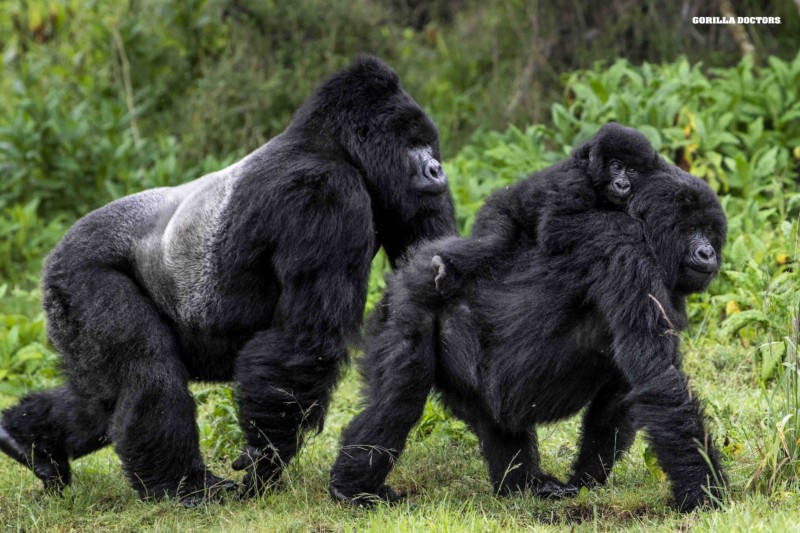Plant life Serengeti
Plant life Serengeti : Serengeti national park comprises of various habitants ranging from large tracts of plains, woodlands and riverine forests, these habitats support many species of trees and grasses which are noticed in the park while on a Tanzania / Serengeti safari.
This article details the plant life in Serengeti national park, listing tree species, grass species and invasive species.
Tree species in Serengeti national park
Serengeti national park comprises of various species of trees found sparsely in the endless plains of the park, these trees include
Sausage Tree (Kigelia Africana)
Sausage Trees also known as Kigelia Africana are large trees only found sparsely in the endless plains of Serengeti national park, these trees are usually found along the dry river banks. The Sausage Trees produce remarkable long (approximately 50 centimeters), succulent but poisonous fruits. These fruits drop from the tree and release seeds as the pulp rots, the fruit stalks can easily been seen in the plains of Serengeti plains most especially in months after the fruit has dropped and it is normally mistaken for a leopard’s tail.

Fig Trees (Fiscus Sp)
In Serengeti national park, there are several species of fig tree, these trees are distinctive grey smooth bark with large buttressing intertwined roots and saucer – sized dark green leaves which makes them easy to identify.
Fig Trees in Serengeti national park are commonly found along the moist banks of rivers, they also grow in the rocky clefts of Kopjes.
Wild Date Palm (Phoenix reclinata)
Wild date Palm also known as Phoenix reclinata follows under the family of palms which are monocotyledons, this means that the veins in their leaves unbranched and parallel and are thus relatives of lilies, bananas, grasses and orchids.
The Wild Date palms are the most common palm trees in Serengeti national park and can be found along rivers and in swamps, fruits from the wild date plams are edible though they taste horrible
The sugary sap from these trees is used to make palm wine, these trees provide shade to the resting lions and they can easily be seen during Serengeti wildlife safari on game drive.

Commiphora (Commiphora africana)
Commiphora also known as Commiphora Africana are easily found throughout of Serengeti but they are more dominant in the eastern section of the park. These trees can easily be differentiated from Vachellia by their peeling, papery blue/yellowish bark and small roundish leaves.
Of all the Commiphora species, Commiphora African myrrh is the most common.
Locally this tree is used for local medication got form the roots, bark and berries used to cure rashes, liver problems and stomach pains.
Yellow Fever Tree (Vachellia xanthophloea)
Yellow Fever Tree in Serengeti national park are commonly sighted in wet areas of the park along the rivers or near swamps and flood plains, these trees are tall with large white thorn, wide stretching branches and yellow barks which make them distinctive and they are hard to miss.
Early settlers of the plains of noticed that malaria was more common near standing water, but blames their fevers on the yellow trees growing in the vicinity rather than mosquitoes which is the origin of Yellow Fever Tree.

Umbrella Tree (Vachellia tortilis)
Umbrella Trees also known as Vachellia tortlis are remarkable trees representing Africa and they are popular for their iconic shape breaking the flat landscape of the plains. These trees arches dramatically over the savannah through Serengeti national park with prominent white thorns, dark bark and its distinguishable flat – top.
Seedlings from these trees are favored by giraffes and elephants and cannot survive bush fires, the seedlings are favoured by giraffes and elephants. Umbrellas Trees in Serengeti national park are approximately 125 0r 45 years old.
Whistling Thorn (Vachellia drepanolobium)
Whistling Thorn trees also known as Vachellia Drepanolobium are odd-looking trees with hard, hallow spheres at the base of its thorns, filled with biting ants. This tree encounrages ants by providing shelter and food in extrafloral nectarines (special flower – like structires) in exchange for protection.
Whistling thorn trees derive their name from the whistling sounds made by the ant’s entrance holes into the hollow galls, these short trees grow in abundance whenever the soil becomes seasonally water saturated.
Grasses
In Serengeti national park there are several species of grasses and they are as follows
Red Oat Grass (Themeda triandra)
Red Oat Grass also known as Themeda triandra is a light pinkish – red color as it dries, this grass is one fof the dominant grass species in the woodlands and the long-grass plains of Serengeti national park.
In the plains of Serengeti national park, these grasses can grow so thick that it looks like a field of wheat with its flat fan-like seed waving in the wind. These grasses is fed by wildebeests though it is consumed after more palatable grasses are exhausted.
Finger Grass (Digitaria macroblephora)
Finger grass is the most common grass in Serengeti national park, this grass is more preferred to the grazers. Like the name suggests, the seed heads of this grass look like thin fingers pointing up to the sky.
Pan Dropseed (Sporobolus ioclados)
Pan Dropseed are one of the two dominant species on the short grass plains, these grass are sporobolus species and both species grow in a dwarf form which makes it difficult to distinguish between them.
Pan Dropseed’s seed head is shaped like a Christmas tree with the seeds dangling below the fronds like miniature ornaments which makes it very distinctive from other grasses in Serengeti national park.
Invasive plant species
Invasive plant species in Serengeti national park which are not endemic to the park create a problem as they push away and replace the original vegetation of the park. some of the introduced plant species in the park is the Mexican Marigold which was introduced to the area with the shipment of wheat seed, this plant is a quick growing weed and makes areas unfarmable and competes with crops and native plants.
Other invasive plant species in Serengeti national park include
- Prickly Pear (Opuntia sp.)
- Custard Oil (Rhoicissus sp.)







